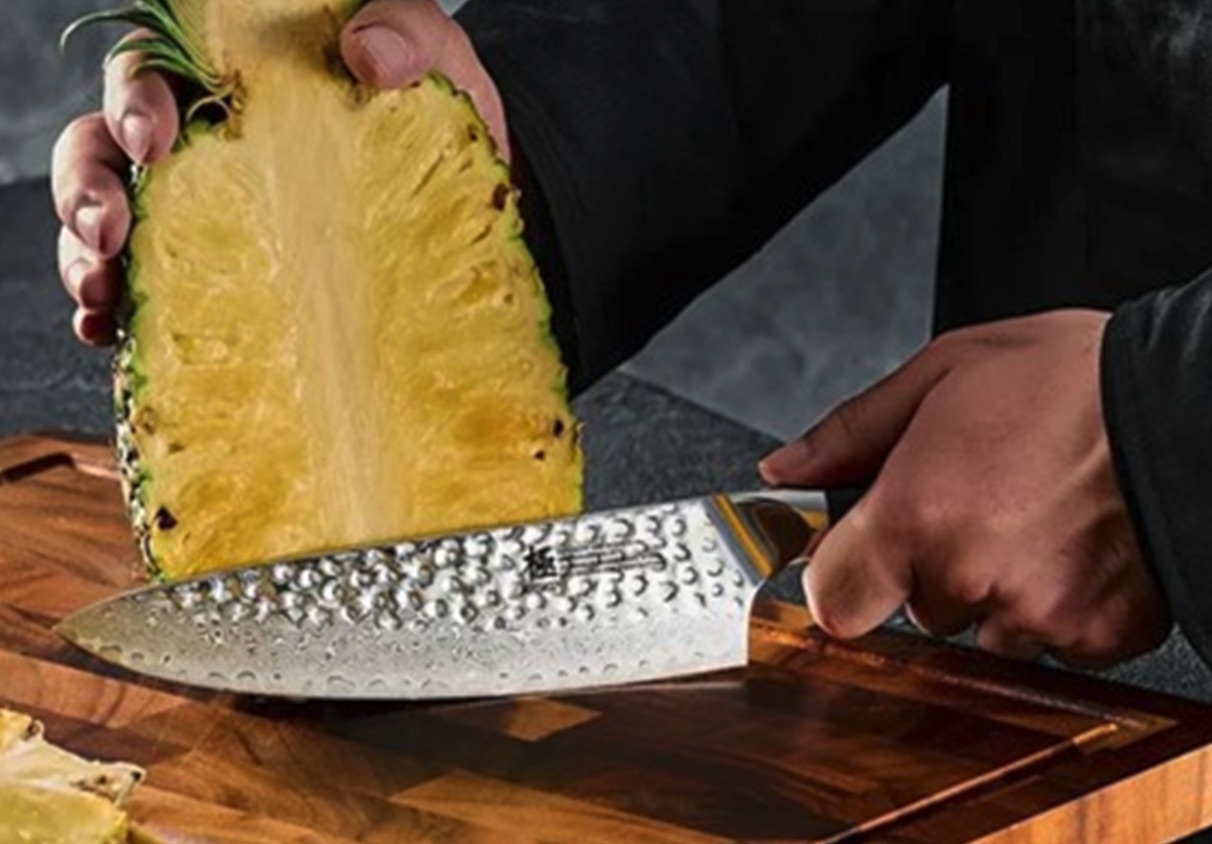There’s something deeply satisfying about a vibrant, crisp salad—especially when every slice, chop, and dice is just right. A great salad doesn’t just rely on fresh ingredients; it also depends on how well those ingredients are prepared. That’s where the Santoku knife steps in. With its balanced design and razor- sharp edge, the Santoku isn’t just a knife—it’s your secret weapon to making salad ingredients truly shine. Let’s take a look at how you can use a Santoku knife to elevate your salad game from good to gorgeous.
Why the Santoku Knife Works Wonders for Salad Prep
Unlike bulky chef’s knives or flimsy utility blades, the Santoku is specifically designed for precision tasks. As one of the most versatile Japanese knives, its name means “three virtues” in Japanese—slicing, dicing, and mincing—and that’s exactly what it excels at.
The slightly shorter blade gives you more control, and the flat edge makes full contact with your cutting board, which helps deliver clean, even cuts. Many Santoku knives also feature hollow-edge dimples, which reduce friction and keep food from sticking—perfect for slicing juicy tomatoes or slick cucumbers without squashing them.
Choosing the Right Ingredients for a Standout Salad
The beauty of salad prep is in the details. The way ingredients are cut affects not only how they look but also how they taste and mix with dressings. Here’s how the Santoku can help you prep your star players:
- Leafy greens (like romaine or spinach): chop or chiffonade for a uniform texture
- Tomatoes: slice cleanly without bruising the flesh
- Cucumbers and radishes: cut thin, even rounds for consistent crunch
- Bell peppers: julienne or dice with confidence
- Red onions: get paper-thin slices that won’t overpower
- Avocados: cube gently without mashing
- Fruits (like apples or strawberries): get smooth slices that resist browning
When ingredients are prepped evenly, they not only look more appealing but also absorb dressings more consistently—so every bite tastes just right.
Knife Techniques That Make a Difference
Even if you’re not a trained chef, a few basic techniques can transform your salad prep:
- Chiffonade greens by stacking, rolling, and slicing them into thin ribbons—ideal for a light, airy texture
- Slice with a forward-backward motion rather than pressing down; let the Santoku’s edge do the work
- Dice tomatoes by first slicing them into rounds, then into neat quarters or eighths
- Mince herbs finely so they distribute evenly and don’t clump together
Thanks to the Santoku’s ergonomic design, these motions feel smooth and natural—even during longer
prep sessions.
Safety and Maintenance Tips for Best Results
Like any good kitchen tool, a Santoku knife performs best when treated well. Here’s how to keep it
working safely and effectively:
- Keep it sharp – a dull knife is more dangerous than a sharp one because it requires more pressure and can slip
- Use a sturdy cutting board – preferably non-toxic wood cutting board; glass can damage the blade
- Grip it correctly – pinch the blade where it meets the handle for better control
- Wash by hand – avoid the dishwasher to preserve the edge and prevent corrosion
Good technique and a sharp blade make prep easier—and safer—every time.
Putting It All Together: A Sample Salad Prep Routine
Let’s say you’re prepping a Mediterranean-inspired salad. Here’s how your Santoku can help you breeze
through the ingredients:
- Cucumbers: slice into thin rounds
- Cherry tomatoes: halve them cleanly with a single glide
- Red onion: shave into paper-thin slices
- Fresh herbs: finely mince parsley or dill
- Feta cheese: cube evenly for even distribution
- Optional add-ins: slice olives, bell peppers, or even grilled chicken breast for added protein
With everything cut precisely and beautifully, your salad will look as fresh as it tastes.
Final Tips for Making Your Salads Shine
- Think about contrast: mix crunchy, soft, and juicy textures
- Use the Santoku to prep garnishes and toppings like nuts or dried fruit
- Clean cuts help ingredients hold their shape and look more appetizing on the plate
- Uniform size helps with even flavor distribution—no overly salty bite of feta or too-strong chunk of onion
Conclusion
A Santoku knife isn’t just another tool in your kitchen—it’s an everyday essential for anyone who values speed, precision, and beautiful results. With a little practice, you’ll find that your salad ingredients not only taste better, but also look stunning in the bowl. So grab your cutting board, pick out some fresh produce, and let your Santoku knife do what it does best.

